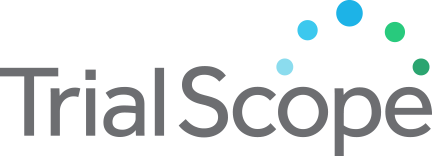
Gadobutrol Versus Gadopentetate Dimeglumine or Gadobenate Dimeglumine Before DCE-MRI in Diagnosing Patients With Multiple Sclerosis, Grade II-IV Glioma, or Brain Metastases
Study Purpose
This pilot clinical trial compares gadobutrol with standard of care contrast agents, gadopentetate dimeglumine or gadobenate dimeglumine, before dynamic contrast-enhanced (DCE)-magnetic resonance imaging (MRI) in diagnosing patients with multiple sclerosis, grade II-IV glioma, or tumors that have spread to the brain. Gadobutrol is a type of contrast agent that may increase DCE-MRI sensitivity for the detection of tumors or other diseases of the central nervous system. It is not yet known whether gadobutrol is more effective than standard of care contrast agents before DCE-MRI in diagnosing patients with multiple sclerosis, grade II-IV glioma, or tumors that have spread to the brain.
Recruitment Criteria
|
Accepts Healthy Volunteers
Healthy volunteers are participants who do not have a disease or condition, or related conditions or symptoms |
No |
|
Study Type
An interventional clinical study is where participants are assigned to receive one or more interventions (or no intervention) so that researchers can evaluate the effects of the interventions on biomedical or health-related outcomes. An observational clinical study is where participants identified as belonging to study groups are assessed for biomedical or health outcomes. Searching Both is inclusive of interventional and observational studies. |
Interventional |
| Eligible Ages | 18 Years and Over |
| Gender | All |
Trial Details
|
Trial ID:
This trial id was obtained from ClinicalTrials.gov, a service of the U.S. National Institutes of Health, providing information on publicly and privately supported clinical studies of human participants with locations in all 50 States and in 196 countries. |
NCT02967380 |
|
Phase
Phase 1: Studies that emphasize safety and how the drug is metabolized and excreted in humans. Phase 2: Studies that gather preliminary data on effectiveness (whether the drug works in people who have a certain disease or condition) and additional safety data. Phase 3: Studies that gather more information about safety and effectiveness by studying different populations and different dosages and by using the drug in combination with other drugs. Phase 4: Studies occurring after FDA has approved a drug for marketing, efficacy, or optimal use. |
N/A |
|
Lead Sponsor
The sponsor is the organization or person who oversees the clinical study and is responsible for analyzing the study data. |
University of Southern California |
|
Principal Investigator
The person who is responsible for the scientific and technical direction of the entire clinical study. |
Meng Law |
| Principal Investigator Affiliation | University of Southern California |
|
Agency Class
Category of organization(s) involved as sponsor (and collaborator) supporting the trial. |
Other, NIH |
| Overall Status | Terminated |
| Countries | United States |
|
Conditions
The disease, disorder, syndrome, illness, or injury that is being studied. |
Adult Anaplastic (Malignant) Meningioma, Adult Anaplastic Astrocytoma, Adult Anaplastic Ependymoma, Adult Anaplastic Oligodendroglioma, Adult Brain Stem Glioma, Adult Choroid Plexus Neoplasm, Adult Diffuse Astrocytoma, Adult Ependymoblastoma, Adult Ependymoma, Adult Giant Cell Glioblastoma, Adult Glioblastoma, Adult Gliosarcoma, Adult Grade II Meningioma, Adult Medulloblastoma, Adult Mixed Glioma, Adult Oligodendroglioma, Adult Papillary Meningioma, Adult Pineal Gland Astrocytoma, Adult Pineoblastoma, Adult Primary Melanocytic Lesion of Meninges, Adult Supratentorial Primitive Neuroectodermal Tumor, Malignant Adult Intracranial Hemangiopericytoma, Metastatic Malignant Neoplasm in the Brain, Multiple Sclerosis, Recurrent Adult Brain Neoplasm |
Contact a Trial Team
If you are interested in learning more about this trial, find the trial site nearest to your location and contact the site coordinator via email or phone. We also strongly recommend that you consult with your healthcare provider about the trials that may interest you and refer to our terms of service below.
